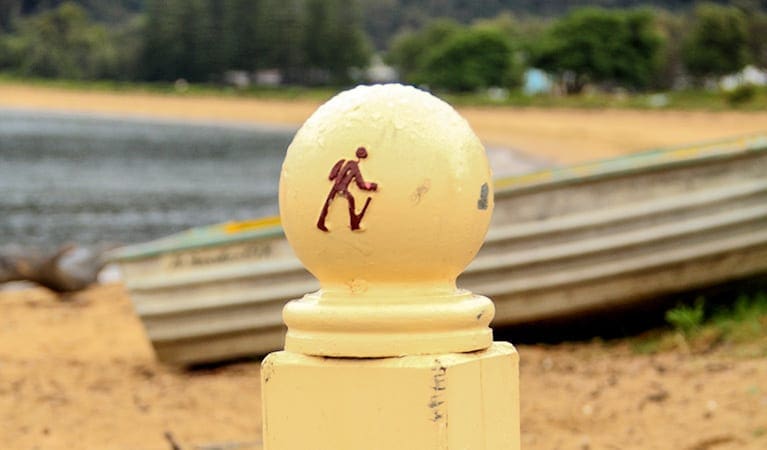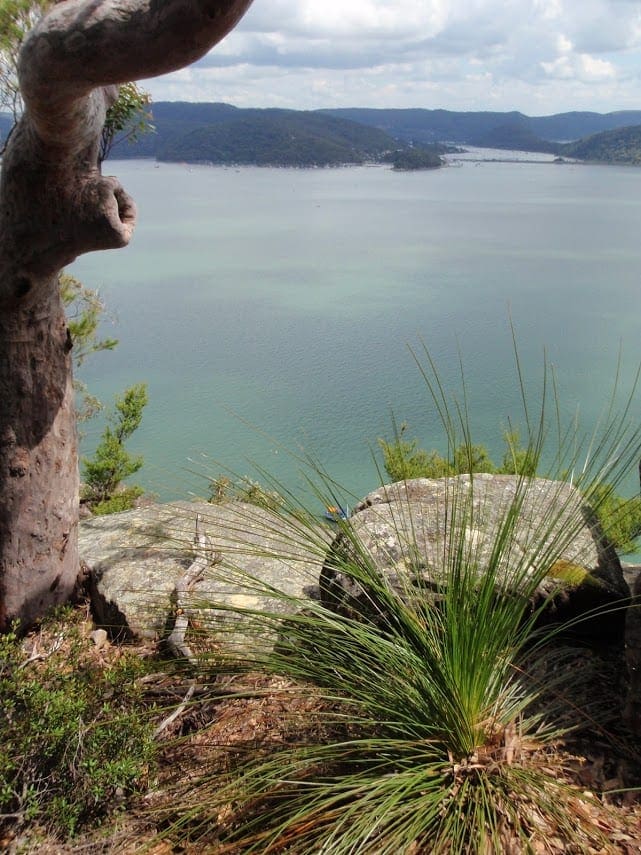Hike at a Glance
Max elevation: 0m
Min elevation: 0m
Total Ascent: 0m
Hike overview
The Patonga to Pearl Beach walking track follows the Great North Walk through the beautiful red gums of Brisbane Water National Park. Bring your swimmers and a towel - this walk begins and ends on a beach, with plenty of opportunity for a refreshing dip or a spot of fishing.
From the end of Patonga Beach, follow signs to the national park. You can head to Warrah Trig from here, while following the steep trail up and over the hill will take you past the spectacular Warrah lookout with views of Hawkesbury River and Pacific Ocean. Pause for a snack, then return to the fire trail, following the Pearl Beach signs past sandstone caves with a natural hanging garden of native ferns. Be sure to keep an eye out for bush turkeys and an ear open for kookaburras.
Your exit is marked at Crystal Avenue. Follow the sounds of crashing waves to find a beautiful stretch of sand on the edge of the bush. You can enjoy a picnic, or take advantage of the small cafes nearby.
Gallery
Got some great shots from this hike? Upload your photos here to inspire others and show off the beauty of the trail!
Click to view form >>
Submitting your photos doesn’t mean you lose ownership. You can be credited for your contributions, and you can request removal at any time.
Content use
Please don’t copy GPX files or content from this site to AllTrails or other platforms. Each trail has been personally mapped, documented, and refined to support Australia’s bushwalking and hiking community. While some details come from land managers, every listing reflects significant personal effort. This is a free, community-driven initiative—your respect helps keep it that way.
Walk map and GPX file
It looks like I don’t have a GPX file for this trail yet. If you have one to share, please email it to me! I’ll verify it against official maps before adding it to help other hikers have a safer, easier experience. Thanks for contributing to a better hiking resource.
Getting there
Getting to the trailhead: Brisbane Water National Park.
To Patonga. Patonga to Pearl Beach walking track is located within Brisbane Water National Park. To get there:By car, from Umina Beach:Take Patonga Drive towards PatongaAs you enter Patonga, take a left towards the boat ramp or continue on to the wharf.Great North walk starts a short walk from Patonga boat rampBy bus:The number 54 bus runs between Patonga and Pearl Beach a few times a day. Both villages are small, with a bus stop near the main beachfront areas. Check the bus schedule before you leave. Park entry points Patonga See on map Parking Parking is available at Pearl Beach and in Patonga, either at the wharf in the centre of town or at the boat ramp a short walk away.
Visit NSW National Parks and Wildlife Service for more information on this trail.
The longitude and latitude of the start and end points are approximately only and should not be used for navigation purposes. Please contact me if you know the correct coordinates.
Closest towns to this walk: East Gosford, Ettalong Beach, Gosford, Holgate, Horsfield Bay, Kariong, Koolewong, North Gosford, Pearl Beach, Saratoga, Umina Beach, Woy Woy, Wyoming
About the region
The Brisbane Water National Park is a protected national park that is in the Central Coast region of New South Wales, in eastern Australia. The 11,506-hectare national park is situated 47 kilometres north of Sydney, 10 kilometres west of Woy Woy, and 12 kilometres southwest of Gosford. The Brisbane Water National Park has two picnic areas within the park close of an evening: Girrakool picnic area is open 9am to 5pm every day Somersby Falls picnic area is open 8am to 8pm during daylight savings and is open 8am to 5pm at other times Other areas of Brisbane Water National Park will be open at all times, however may have to close at times due to poor weather or fire danger.
Similar walks nearby
Looking for more walks in or near Brisbane Water National Park? Try these trails with a similar difficulty grade.
Track grade
Grade 5 (Difficult) - Walks for the Most Experienced: Grade 5 represents the most challenging walking tracks on the AWTGS. These are only recommended for very experienced and fit walkers with specialised skills, including navigation and emergency first aid. Tracks are likely to be very rough, very steep, and unmarked. Walks may be more than 20 kilometers. These challenging walks demand a high level of fitness and experience to navigate difficult terrain, significant elevation changes, and potentially unformed paths.
Explore safe
Plan ahead and hike safely! Carry enough water, pack layers for changing conditions, and bring safety gear like a torch, PLB, and reliable communication device. Check official sources for trail updates, closures, and access requirements, and review local weather and bushfire advice. Most importantly, share your plans with someone before you go. Being prepared makes for a safer and more enjoyable hike! Stay Safe, Explore More, and Always #ExploreSafe.
Packing checklists
What you carry in your pack depends on factors like weather, terrain, and your adventure type. Not sure what to bring? My free planning, food, and packing checklists are a great starting point, covering day hikes, overnight trips, and multi-day adventures. Use them to customise your kit and always prioritise safety.
Let someone know
Before heading out, take a moment to fill out your trip intentions form. It’s a quick way to share your hike details with family or friends. If something goes wrong, they can notify emergency services, ensuring a faster response and peace of mind. Stay safe and enjoy your adventure
Suggest an edit
Spotted a change on this trail? Maybe there are new features, the route has shifted, or the trail is permanently closed. Whatever the update, I’d love your input. Your feedback helps fellow hikers stay informed and ensures that our trail info stays fresh and reliable.
Acknowledgement of Country
Trail Hiking Australia acknowledges the Traditional Owners of the lands on which we hike and pay respects to their Elders, past and present, and we acknowledge the First Nations people of other communities who may be here today.






